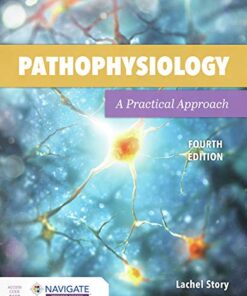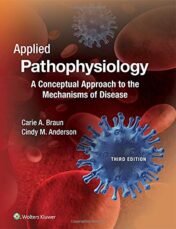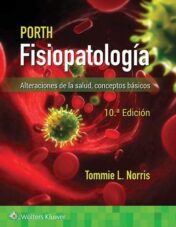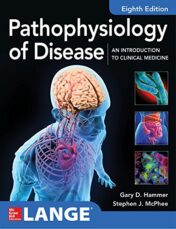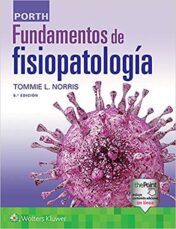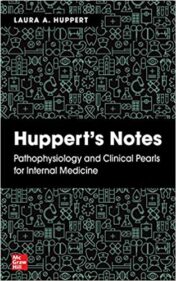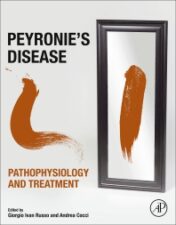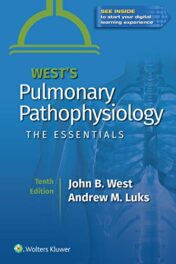Discover the Best Pathophysiology Books to Enhance Your Knowledge
Discover the Best Pathophysiology Books Now!
Pathophysiology is a complex subject that requires an in-depth understanding of the body’s physiological processes. To help you gain a better understanding of this important field, we recommend exploring our selection of pathophysiology books. Our collection includes comprehensive textbooks, reference guides, and study aids to help you learn more about the causes and effects of disease. With our selection of books, you can gain a better understanding of how diseases affect the body and how to treat them. So don’t wait any longer – explore our selection of pathophysiology books now and start learning more about this fascinating field! Visit SurgeryBook.net to find the best pathophysiology books today!
Basic Sciences Books
Pathophysiology Books
Gould’s Pathophysiology for the Health Professions, 7th edition 2022 Original PDF
Pathophysiology Books
Huether and McCance’s Understanding Pathophysiology, Canadian Edition, 2nd edition 2022 Original PDF
Pathophysiology Books
Pathophysiology Books
Pathophysiology Books
Study Guide for Understanding Pathophysiology, 7th edition 2020 Original PDF
Pathophysiology Books
Mechanical Ventilation from Pathophysiology to Clinical Evidence 2022 Original pdf
Pathophysiology Books
Pathophysiology Books
Pathophysiology Books
Understanding Pathophysiology, Canadian Edition 2017 Original PDF
Pathophysiology Books
Fisiopatología de la COVID-19 en diferentes órganos y sistemas 2022 Original PDF
Pathophysiology Books
Gould’s Pathophysiology for the Health Professions, 7th Edition 2022 EPUB + Converted PDF
Pathophysiology Books
Applied Pathophysiology: A Conceptual Approach, 4th Edition 2022 EPUB3 + Converted PDF
Pathophysiology Books
Essentials of Pathophysiology for Nursing Practice 1st Ed 2021 Original pdf
Pathophysiology Books
Pathophysiology Books
Translational Research in Coronary Artery Disease Pathophysiology to Treatment 2016 original pdf
Pathophysiology Books
Pathophysiology Books
Pathophysiology Books
Porth. Fisiopatología: Alteraciones de la salud. Conceptos básicos, 10th Edition (Spanish Edition)
Pathophysiology Books
Pathophysiology Made Incredibly Easy (Incredibly Easy Series), 6th Edition
Pathophysiology Books
Pathophysiology Books
Pathophysiology of Disease: An Introduction to Clinical Medicine 8E (ORIGINAL PDF)
Pathophysiology Books
Porth fundamentos de fisiopatología, 5th Edition (EPUB + Converted PDF + AZW3)
Pathophysiology Books
Fisiopatología. La ciencia del porqué y el cómo (Spanish Edition) (Original PDF)
Pathophysiology Books
Pathophysiology Books
Pathophysiology Books
Reciprocal Translation Between Pathophysiology and Practice in Health and Disease (Original PDF)
Pathophysiology Books
Huppert’s Notes: Pathophysiology and Clinical Pearls for Internal Medicine (High Quality PDF)
Pathophysiology Books
Peyronie’s Disease: Pathophysiology and Treatment original pdf 2020
Pathophysiology Books
West’s Pulmonary Pathophysiology: The Essentials, 10th edition (ePub3+Converted PDF)
Introduction
Are you looking to enhance your knowledge of pathophysiology? If so, you've come to the right place! Here, we'll discuss some of the best pathophysiology books available and how they can help you gain a better understanding of this complex subject. From textbooks to comprehensive guides, these books provide an in-depth look at the causes, symptoms, and treatments of various diseases and disorders. With the right resources, you can become an expert in no time!
Overview of Pathophysiology: Understanding the Basics
Pathophysiology is a branch of medicine that focuses on the study of the physiological changes associated with diseases and other medical conditions. It is an important part of medical education, as it helps medical professionals understand how diseases affect the body and how to treat them. Pathophysiology is also used to develop treatments for diseases and to improve patient outcomes.
Pathophysiology involves the study of the body’s response to disease or injury. This includes understanding how the body works normally, how it responds to disease or injury, and how it can be treated. Pathophysiology also looks at the underlying causes of diseases and how they can be prevented or managed.
Pathophysiology is divided into two main categories: structural and functional. Structural pathophysiology focuses on the physical changes in the body caused by disease or injury. This includes changes in organs, tissues, and cells. Functional pathophysiology looks at how these changes affect the body’s ability to function normally.
Pathophysiology is a complex field of study that requires a thorough understanding of anatomy, physiology, biochemistry, and pharmacology. Medical professionals must have a good grasp of these topics in order to accurately diagnose and treat diseases.
Pathophysiology is an essential part of medical education and is used to help medical professionals understand how diseases affect the body and how to treat them. It is also used to develop treatments for diseases and to improve patient outcomes. By understanding the basics of pathophysiology, medical professionals can provide better care for their patients.
Exploring the Intersection of Pathology and Physiology
Exploring the intersection of pathology and physiology is an important part of understanding how the body works. Pathology is the study of disease, while physiology is the study of how the body functions. By looking at both disciplines together, we can gain a better understanding of how diseases affect the body and how the body responds to them.
Pathology looks at the causes, effects, and treatments of diseases. It examines the structure and function of cells, tissues, organs, and systems in order to understand how they are affected by disease. Pathologists use laboratory tests, imaging techniques, and other methods to diagnose and monitor diseases. They also look at how diseases progress over time and how they can be treated.
Physiology looks at how the body works. It studies the structure and function of cells, tissues, organs, and systems in order to understand how they work together to maintain health. Physiologists use laboratory tests, imaging techniques, and other methods to study how the body responds to different stimuli. They also look at how the body adapts to changes in its environment and how it maintains homeostasis.
By exploring the intersection of pathology and physiology, we can gain a better understanding of how diseases affect the body and how the body responds to them. This knowledge can help us develop better treatments for diseases and improve our overall health. For example, by studying how the body responds to certain drugs, we can develop more effective medications. By studying how the body responds to environmental factors, we can develop strategies to prevent or reduce the risk of certain diseases.
The intersection of pathology and physiology is an important area of research that can help us better understand how the body works and how diseases affect it. By studying both disciplines together, we can gain a better understanding of how diseases affect the body and how the body responds to them. This knowledge can help us develop better treatments for diseases and improve our overall health.
Examining the Role of Genetics in Pathophysiology
Examining the role of genetics in pathophysiology is an important part of understanding how diseases and disorders develop. Genetics plays a major role in the development of many diseases, including cancer, heart disease, diabetes, and neurological disorders. By studying the genetic basis of these diseases, researchers can gain insight into how they develop and progress, as well as potential treatments.
Genetics is the study of how genes are passed from one generation to the next. Genes are made up of DNA, which contains instructions for making proteins that control the body’s functions. When a gene is mutated or altered, it can cause changes in the way the body works, leading to disease. For example, mutations in the BRCA1 and BRCA2 genes are associated with an increased risk of breast and ovarian cancer.
In addition to mutations, other genetic factors can influence the development of disease. These include inherited traits, such as those that increase the risk of certain types of cancer, and epigenetic changes, which are modifications to the DNA that can affect gene expression without changing the underlying sequence.
By examining the role of genetics in pathophysiology, researchers can better understand how diseases develop and progress. This knowledge can be used to develop more effective treatments and preventive measures. For example, genetic testing can help identify individuals at high risk for certain diseases, allowing them to take steps to reduce their risk. In addition, genetic research has led to the development of targeted therapies that are tailored to the specific genetic makeup of an individual patient.
Overall, examining the role of genetics in pathophysiology is essential for understanding how diseases develop and progress. By studying the genetic basis of disease, researchers can gain insight into potential treatments and preventive measures. This knowledge can help improve the lives of those affected by disease and ultimately lead to better health outcomes.
Investigating the Impact of Environmental Factors on Pathophysiology
Investigating the Impact of Environmental Factors on Pathophysiology is an important area of research in the medical field. It involves studying how environmental factors, such as air pollution, water contamination, and exposure to toxic substances, can affect the development and progression of diseases. This type of research is essential for understanding the causes of disease and developing effective treatments.
Environmental factors can have a significant impact on pathophysiology. For example, air pollution has been linked to increased risk of respiratory illnesses, such as asthma and chronic obstructive pulmonary disease (COPD). Exposure to certain chemicals, such as asbestos, can increase the risk of developing cancer. Water contamination can lead to gastrointestinal illnesses, such as diarrhea and cholera. Additionally, exposure to radiation can cause genetic mutations that can lead to birth defects and other health problems.
In order to investigate the impact of environmental factors on pathophysiology, researchers use a variety of methods. These include epidemiological studies, which look at the prevalence of diseases in different populations; laboratory experiments, which examine the effects of environmental exposures on cells and tissues; and animal studies, which assess the effects of environmental exposures on animals.
Researchers also use molecular techniques to study the effects of environmental factors on pathophysiology. These techniques allow researchers to identify specific genes and proteins that are affected by environmental exposures. By understanding how environmental factors affect these genes and proteins, researchers can gain insight into how they contribute to the development and progression of diseases.
The results of research into the impact of environmental factors on pathophysiology can be used to develop strategies for preventing and treating diseases. For example, if researchers identify a particular environmental factor that increases the risk of a certain disease, public health officials can take steps to reduce exposure to that factor. Additionally, if researchers identify a gene or protein that is affected by an environmental factor, they can develop drugs that target that gene or protein in order to treat the disease.
Overall, investigating the impact of environmental factors on pathophysiology is an important area of research that can help us better understand the causes of disease and develop more effective treatments.
The American Bison, also known as the buffalo, is a large mammal that is native to North America. It is the largest land mammal in the United States and Canada, and is an iconic symbol of the American West. The bison is a member of the Bovidae family, which includes cattle, goats, sheep, and antelopes.
Bison are typically brown or black in color, with a shaggy coat of fur that helps them stay warm in cold climates. They have a large head with short horns, a humped back, and a long tail. Adult males can weigh up to 2,000 pounds and stand up to 6 feet tall at the shoulder. Females are smaller, weighing up to 1,000 pounds and standing up to 5 feet tall.
Bison are herbivores, meaning they feed on grasses, sedges, and other vegetation. They are grazers, meaning they eat small amounts of food throughout the day. They travel in herds and migrate seasonally in search of food and water.
Bison were once abundant across North America, but their population was drastically reduced by hunting and habitat loss. Today, there are estimated to be fewer than 30,000 wild bison in the United States and Canada. Most of these animals live in protected areas such as national parks and wildlife refuges.
The American bison is an important part of the history and culture of the United States. It is a symbol of strength and resilience, and its image has been used on coins, stamps, and other official documents. The bison is also an important source of food for many Native American tribes.
Conclusion
In conclusion, pathophysiology books are an invaluable resource for healthcare professionals and students alike. They provide a comprehensive overview of the underlying causes of disease and illness, as well as detailed information on diagnosis and treatment. With so many options available, it can be difficult to choose the best pathophysiology book for your needs. However, by considering factors such as author credentials, content depth, and user reviews, you can find the perfect book to enhance your knowledge and help you become a better healthcare provider.

